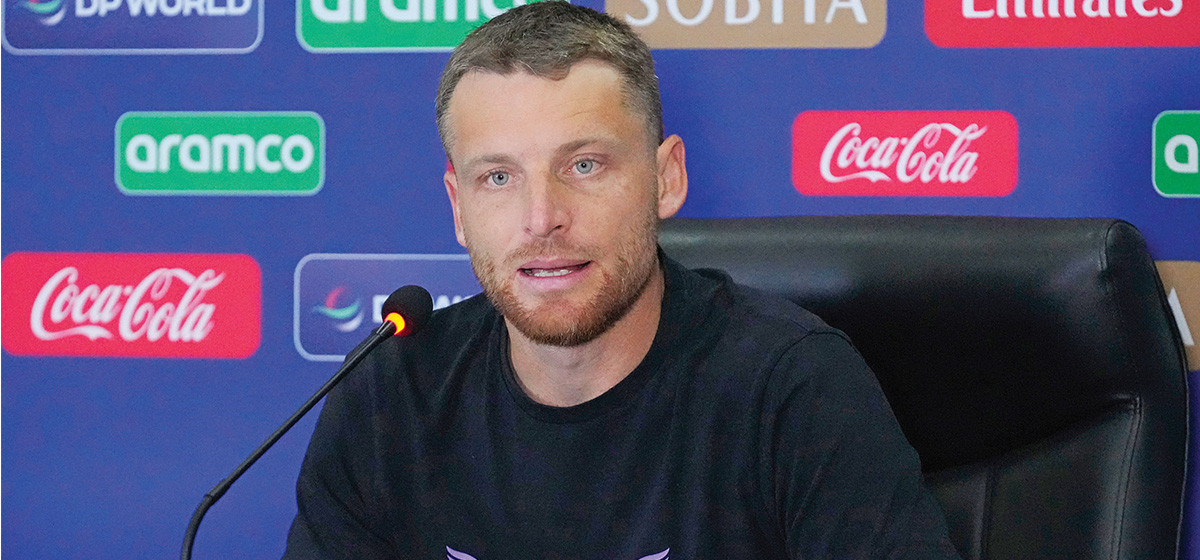485,000 tons of fertilizer can be produced from bio-waste generated every year
KATHMANDU, June 7: A two-day conference on Science and Technology for Prosperity: “Connecting Lives with Land, Water and Environment" concluded in Kathmandu on Thursday. The event, which was inaugurated by former prime minister Madhav Kumar Nepal and organized by the Ministry of Industry, Tourism, Forests and Environment of Province 3 in collaboration with the Central Department of Hydrology and Meteorology (CDHM) under Tribhuvan University, welcomed a total of 16 scientists to present their research papers. A total of five sessions - Agriculture and Forestry, Disaster Risk Reduction and Early Warning System, Environment and Energy, Climate Change and Natural Resource Management, and Science and Technology - were held at the two-day conference.
Speakers at the conference shed light on various alternatives to fuel energy. According to key speaker Rabindra Prasad Dhakal, 485,000 tons of fertilizer can be produced from the biowaste generated in the country every year while 12.4 percent of fuel consumption can be reduced by using plant waste. “Nepal also has the potential to generate jatropha oil,” Dhakal said.
Nepal records, 8,017 cases, 5,292 recoveries and 15 deaths on T...

During the session on agriculture, the participating scientists dealt with sustainable agriculture to manage natural resources and mitigate climate change. Discussions were also held on soil salinity hazard assessment and a study of agronomic research frontiers to sustain cereal-based farming systems in Terai and Mid-Hills.
A session also covered disaster reduction and early warning system, in which Someshwar Das from India presented an analysis of the recent tornado in Bara and Parsa. Similarly, Narayan Mahat from Nepal covered how Algae could be transformed into bio-diesel and used as an alternative to petroleum and diesel.
Binod Dawadi, associate professor at CDHM, said that researcher Min Prasad Bhusal's study on flood, hydrology, and hazard minimization was interesting. “The solution to controlling floods is to track run-offs which is possible through terrain improvement and maximum plantation,” he said while prioritizing the need for resolving trans-boundary issues and accelerating regional cooperation.
Similarly, researcher Sanjib Adhikari explained how he was using satellite technology to derive findings on the onset of monsoon. According to his study, monsoon is arriving 0.17 days earlier every year. Another researcher Dr Lekendra Tripathee, who is conducting his study in China, covered the issue of mercury deposition in the Himalayas. “Mercury, a toxic heavy metal is widely used in industries and its accumulation could have serious effects on the pristine ecosystem of the Himalayas,” Tripathee said, adding, “The concentration of mercury in Kathmandu is comparable to that in China, which has the highest concentration of the heavy metal.”Similarly, researcher Bindu Ghimire Thapa did an 'antibiogram analysis' of bacteria found in water samples from the Manohara River. Her research exposed how most pathogens are becoming resistant to antibiotics.
“Fecal contamination and industrial waste contamination releases heavy metals and antibiotic traces directly into water sources,” Thapa said. Pathogens, when in direct contact with such antibiotics and metals, develop resistance which can be a grave threat. According to Thapa, most pathogens studied during her research have developed resistance against the antibiotics given at hospitals. “This is the 21st century, the age of great scientific advancement, and yet the ground reality here in Nepal is different,” Thapa concluded at the end of her presentation.
According to the organizers, the goal of the program was to utilize the latest science and technology to conserve land, water, and sanitation to achieve sustainable development. The conference provided a platform for research scientists to bring forth their papers and discuss problems and solutions to deal with such issues. Scientists working in the SAARC region, specializing in climate, land, water, forest, agriculture, tourism, industry shared ideas and valuable experiences.





































